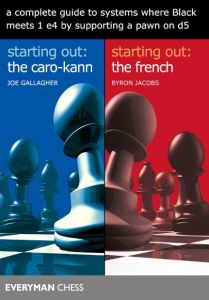Artikelnummer
LOBAUTPF
Autor
The Philidor files
detailed coverage of a dynamic opening
304 Seiten, kartoniert, Everyman, 1. Auflage 2007
The Philidor is a dynamic and underrated answer to White's popular opening move, 1 e4. Recently it has acquired something of a cult following amongst certain Grandmasters; its supporters include the French number one Etienne Bacrot and the former European Champion Liviu Dieter Nisipeanu. One of its major selling points is its flexibility - Black even has a choice of two opening moves. It also suits a wide variety of playing styles; games can lead to sharp, tactical duels as well as strategic, positional battles.
In this definitive guide, Christian Bauer, himself a renowned expert on the Philidor, uncovers the secrets behind this intriguing opening. Using his own experience and other top-class Philidor games, Bauer identifies both the critical main lines and the tricky sidelines. He also examines the key tactical and strategic ideas for both White and Black, while highlighting crucial issues such as move-order options - a major weapon for the modern Grandmaster.
·Comprehensive coverage of a provocative opening
·Packed with original analysis
·Ideal for club and tournament players
In this definitive guide, Christian Bauer, himself a renowned expert on the Philidor, uncovers the secrets behind this intriguing opening. Using his own experience and other top-class Philidor games, Bauer identifies both the critical main lines and the tricky sidelines. He also examines the key tactical and strategic ideas for both White and Black, while highlighting crucial issues such as move-order options - a major weapon for the modern Grandmaster.
·Comprehensive coverage of a provocative opening
·Packed with original analysis
·Ideal for club and tournament players
| EAN | 9781857444360 |
|---|---|
| Gewicht | 490 g |
| Hersteller | Everyman |
| Breite | 15,2 cm |
| Höhe | 22,8 cm |
| Medium | Buch |
| Erscheinungsjahr | 2007 |
| Autor | Christian Bauer |
| Sprache | Englisch |
| Auflage | 1 |
| ISBN-10 | 1857444361 |
| ISBN-13 | 9781857444360 |
| Seiten | 304 |
| Einband | kartoniert |
| Name | Everyman (former Cadogan) |
|---|---|
| Adresse | 10 Northburgh Street London EC1V 0AT Großbritannien |
| dcaddelman@yahoo.com |
Verantwortlicher Importeuer:
| Name | Schachversand Niggemann |
|---|---|
| Adresse | Schadowstraße 5 48163 Münster Deutschland |
| info@schachversand.de | |
| Internet | www.schachversand.de |
005 Introduction
Part 1: 1 e4 e5 2 Nf3 d6
010 1 Early Deviations
044 2 3 d4 exd4: Introduction and Larsen's Variation
083 3 Antoshin's Variation: Introduction
109 4 Antoshin's Variation: 6 Bf4
Part 2: 1 e4 d6 2 d4 Nf6
132 5 Early Deviations and 3 f3
147 6 3 Bd3
264 7 3 Nc3 e5
275 8 3 Nc3 Nbd7: Introduction and 4 f4
197 9 3 Nc3 Nbd7 4 g4
Part 3: The Philidor Hanham Variation (1 e4 d6 2 d4 Nf6 3 Nc3 Nbd7 4 Nf3 e5)
207 10 Introduction and 5 g4
218 11 5 Bc4: Introduction and Bxf7+ Lines
232 12 Main Line: 7 Qe2 and 7 a4
247 13 Main Line: 8 Re1 without 8...b6
280 14 Main Line: 8 Re1 b6
299 Final Thoughts
301 Index of Variations
Part 1: 1 e4 e5 2 Nf3 d6
010 1 Early Deviations
044 2 3 d4 exd4: Introduction and Larsen's Variation
083 3 Antoshin's Variation: Introduction
109 4 Antoshin's Variation: 6 Bf4
Part 2: 1 e4 d6 2 d4 Nf6
132 5 Early Deviations and 3 f3
147 6 3 Bd3
264 7 3 Nc3 e5
275 8 3 Nc3 Nbd7: Introduction and 4 f4
197 9 3 Nc3 Nbd7 4 g4
Part 3: The Philidor Hanham Variation (1 e4 d6 2 d4 Nf6 3 Nc3 Nbd7 4 Nf3 e5)
207 10 Introduction and 5 g4
218 11 5 Bc4: Introduction and Bxf7+ Lines
232 12 Main Line: 7 Qe2 and 7 a4
247 13 Main Line: 8 Re1 without 8...b6
280 14 Main Line: 8 Re1 b6
299 Final Thoughts
301 Index of Variations
To be honest I have seldom been so impressed as this openings book from the young GM Christian Bauer on the Philidor defence. This book is all together good for 304 well filled pages all with move to move annotations and just compare that all with the the latest ECO C of Chess Openings Encyclopaedia with it’s seven and a quarter page!
Probably many readers will remember Bauer first openings book Play 1…b6! which was also released by Everyman Chess, but this Philidor defence book is a complete other story!
The modern Philidor player from nowadays prefers to play first a kind of Pirc defence but than switches over on move three to his real love the Philidor with his black night from B8 to d7, all these small subtleties are the key moves to a successful comeback of this forgotten opening.
First of all I am very impressed that Christian Bauer really covers every possible line of the Philidor, yes with even rare transpositions to the Latvian Gambit as we can see in the next moves: 1.e4 e5 2.Nf3 d6 3.d4 f5 4.Nc3 fxe4 5.Nxe4 d5 6.Nxe5 dxe4 7.Qh5+ g6 8.Nxg6 hxg6 9.Qxg6+ Kd7 10.Qf5+ Ke8 11.Qe5+ Be6 12.Qxh8 Nc6.
But this all is nothing compared with chapter eleven 1.e4 d6 2.d4 Nf6 3.Nc3 Nbd7 4.Nf3 e5 5.Bc4 Be7 6.Bxf7+? Kxf7 7.Ng5+ Kg8 8.Ne6 or better 1.e4 d6 2.d4 Nf6 3.Nc3 Nbd7 4.Nf3 e5 5.Bc4 Be7 6.dxe5 dxe5 7.Bxf7+ Kxf7 8.Ng5+ Kg6! 9.f4 exf4 10.Ne6 Qg8 11.Nxc7 Ne5! 12.Nxa8 Bg4 13.Qd4 Nc6 14.Qf2 Qc4 where the young author writes: This is stronger than the immediate capture of the knight. Black is planning to play ..Bc5 or ..Bb4 and allows his opponent to respite. He has a clearly superior position, as you could easy verify by trying to defend the white side!
By the way 9.h4?! is condemned by Kosten and Van Rekom/Janssen. Old analysis by Voronov and Keres give in the books of the aforementioned authors, runs as follows: 9…h5 10.f4 exf4 11.Ne2 Bd6 12.e5 Nxe5 13.Nxf4+ Kh6 14.Nf7+ Nxf7 15.Ne6+ Kh7 16.Nxd8 Rxd8 and black has a winning advantage.
Interesting is 1.e4 d6 2.d4 Nf6 3.Nc3 Nbd7 4.Nf3 e5 5.Bc4 Be7 6.Ng5!? Bauer: This is much more interesting than 7.Bxf7.White will win material by force,but at the cost of falling behind in development black must play dynamically in order not to let his opponent consolidate. As a general rule black should try to avoid entering an endgame and concentrate his pieces for an assault against the white king. On page 226 I found an old recommendation from the authors of the Lion which is not so strong as the authors once hoped, because it gives white in no time a winning position, 1.e4 d6 2.d4 Nf6 3.Nc3 Nbd7 4.Nf3 e5 5.Bc4 Be7 6.Ng5!? 0-0 7.Bxf7+ Rxf7 8.Ne6 Qe8 9.Nxc7 Qd8 10.Nxa8 exd4?! A recommendation by the authors of the Lion, already proposed by Tony Kosten in Winning with the Philidor. The idea consists of quickly attacking f2. According to both sources a logical course of events seems to be 11.Qxd4 Ng4 12.0-0! b6 13.Nb5! Nc5 14.f3 Ne5 15.b4 Nc6 16.Qd2 Ne6 17.Rd1 and d6 drops, leaving white with a rook and three pawns for knight and bishop-again a technically winning position.
By the way the index contains: Part 1; Early deviations, 3.d3 exd4: Introduction and Larsen’s variation, Antoshin’s variation with introduction and 6.Bf4 Part 2: Early 1.e4 d6 2.d4 Nf6, Early deviations and 3.f3,3.Bd3,3.Nc3 e53,Nc3 Nbd7: Introduction, 4.f4 and 4.g4,and Part 3 with The Philidor Hanham variation.
Conclusion: A very important reference work on the Philidor defence!
With kind permission of the author John Elburg (www.chessbooks.nl)
Probably many readers will remember Bauer first openings book Play 1…b6! which was also released by Everyman Chess, but this Philidor defence book is a complete other story!
The modern Philidor player from nowadays prefers to play first a kind of Pirc defence but than switches over on move three to his real love the Philidor with his black night from B8 to d7, all these small subtleties are the key moves to a successful comeback of this forgotten opening.
First of all I am very impressed that Christian Bauer really covers every possible line of the Philidor, yes with even rare transpositions to the Latvian Gambit as we can see in the next moves: 1.e4 e5 2.Nf3 d6 3.d4 f5 4.Nc3 fxe4 5.Nxe4 d5 6.Nxe5 dxe4 7.Qh5+ g6 8.Nxg6 hxg6 9.Qxg6+ Kd7 10.Qf5+ Ke8 11.Qe5+ Be6 12.Qxh8 Nc6.
But this all is nothing compared with chapter eleven 1.e4 d6 2.d4 Nf6 3.Nc3 Nbd7 4.Nf3 e5 5.Bc4 Be7 6.Bxf7+? Kxf7 7.Ng5+ Kg8 8.Ne6 or better 1.e4 d6 2.d4 Nf6 3.Nc3 Nbd7 4.Nf3 e5 5.Bc4 Be7 6.dxe5 dxe5 7.Bxf7+ Kxf7 8.Ng5+ Kg6! 9.f4 exf4 10.Ne6 Qg8 11.Nxc7 Ne5! 12.Nxa8 Bg4 13.Qd4 Nc6 14.Qf2 Qc4 where the young author writes: This is stronger than the immediate capture of the knight. Black is planning to play ..Bc5 or ..Bb4 and allows his opponent to respite. He has a clearly superior position, as you could easy verify by trying to defend the white side!
By the way 9.h4?! is condemned by Kosten and Van Rekom/Janssen. Old analysis by Voronov and Keres give in the books of the aforementioned authors, runs as follows: 9…h5 10.f4 exf4 11.Ne2 Bd6 12.e5 Nxe5 13.Nxf4+ Kh6 14.Nf7+ Nxf7 15.Ne6+ Kh7 16.Nxd8 Rxd8 and black has a winning advantage.
Interesting is 1.e4 d6 2.d4 Nf6 3.Nc3 Nbd7 4.Nf3 e5 5.Bc4 Be7 6.Ng5!? Bauer: This is much more interesting than 7.Bxf7.White will win material by force,but at the cost of falling behind in development black must play dynamically in order not to let his opponent consolidate. As a general rule black should try to avoid entering an endgame and concentrate his pieces for an assault against the white king. On page 226 I found an old recommendation from the authors of the Lion which is not so strong as the authors once hoped, because it gives white in no time a winning position, 1.e4 d6 2.d4 Nf6 3.Nc3 Nbd7 4.Nf3 e5 5.Bc4 Be7 6.Ng5!? 0-0 7.Bxf7+ Rxf7 8.Ne6 Qe8 9.Nxc7 Qd8 10.Nxa8 exd4?! A recommendation by the authors of the Lion, already proposed by Tony Kosten in Winning with the Philidor. The idea consists of quickly attacking f2. According to both sources a logical course of events seems to be 11.Qxd4 Ng4 12.0-0! b6 13.Nb5! Nc5 14.f3 Ne5 15.b4 Nc6 16.Qd2 Ne6 17.Rd1 and d6 drops, leaving white with a rook and three pawns for knight and bishop-again a technically winning position.
By the way the index contains: Part 1; Early deviations, 3.d3 exd4: Introduction and Larsen’s variation, Antoshin’s variation with introduction and 6.Bf4 Part 2: Early 1.e4 d6 2.d4 Nf6, Early deviations and 3.f3,3.Bd3,3.Nc3 e53,Nc3 Nbd7: Introduction, 4.f4 and 4.g4,and Part 3 with The Philidor Hanham variation.
Conclusion: A very important reference work on the Philidor defence!
With kind permission of the author John Elburg (www.chessbooks.nl)
Im 18. Jahrhundert liegen die Anfänder Schachstrategie, verbunden mit dem Namen des berühmten franösischen Meisterspielers und Opernkomponisten André Danican Philidor, komprimiert in seinem Leitsatz „Die Bauern sind die Seele des Schachspiels".
Philidor gilt als geistiger Vater der Eröffnung 1.e4 e5 2.Sf3 d6, mit der sich sein junger Landsmann, GM Christian Bauer, in seinem neuen Buch ausführlich beschäftigt. Galt diese Spielweise lange Zeit als etpassiv, so wurde sie doch in den letzten Jahren - wohl aufgrund ihrer beachtlichen Flexibilität - von fühGM wie etwa Beljawski, Bacrot und Nisipeanu immer wieder angewandt.
Bauers Werk ist nicht als Repertoireaus Sicht von Schwarz gesondern als objektive Überdes neuesten theoretischen Standes; es gliedert sich wie folgt:
1.Teil: 1.e4 e5 2.Sf3 d6:
1) Frühe Abweichungen: für Weiß kommt hier nur 3.Lc4 in Frage, während Schwarz nach dem übli 3.d4 mit 3...Sc6/...Lg4/ ...De7/...Sd7/...f5/...Sf6 versuchen kann, den Weißen zu überraschen (S. 10-43, mit 13 im laufenden Text verstreuten vollständigen Beispielund natürlich mit vielen Par
2) 3.d4 e:d4 4.D:d4 (damit kann Weiß keinen Vorteil erzielen) oder 4. S:d4 g6, die Larsen-Variante, heutnur noch selten gespielt (S. 44-82, mit 11 Partien).
3) Die Antoschin-Variante 1.e4 e5 2.Sf3 d6 3.d4 e:d4 4.S:d4 Sf6 5. Sc3 Le7 mit den selteneren Fort6.Sde2/Lc4/Le2/g3 (S. 83-108), mit 6 Partien).
4) Antoschin-Hauptvariante 6.Lf4 mit baldiger 0-0-0 und lebhaften Kampfbildern, wenn Schwarz kurz rochiert (S. 109-131, mit 11 ParVerzichtet Schwarz auf 3... e:d4 und spielt stattdessen 3....Sf6, so kann er frühzeitig in Nachteil geDeshalb hat sich auf Meistereine andere Zugfolge durchwo ...e5 erst mit Verzögegespielt wird.
2. Teil befasst sich mit:
5) Frühe Abweichungen 1.e4 d6 2. d4 Sf6 3.Sd2 oder 3.f3 Nach 3.f3 hat Schwarz die Wahl zwischen 3... e5 und 3...d5 (S. 132-146, mit 5 Partien).
6) 1.e4 d6 2.d4 Sf6 3.Ld3 e5 4.c3 d5! und nun 5...d:e4 oder 5...S:e4 (S. 147-163, mit 6 Partien).
7) 1.e4 d6 2.d4 Sf6 3.Sc3 e5 4.f4/ Sge2/d:e5 braucht Schwarz nicht zu fürchten, insbesondere nicht das Endspiel nach 4.d:e5 (S. 164-174, mit 2 Partien).
8) 1.e4 d6 2.d4 Sf6 3.Sc3 Sbd7 und jetzt 4.g3/Le3/f4: vor allem nach 4...f4 können große taktische Komplikationen entstehen (S. 175-196, mit 11 Partien).
9) 1.e4 d6 2.d4 Sf6 3.Sc3 4.g4: dieses aggressive Vorgehen sollte Schwarz mit 4...h6 beantworten, und sich nach 5.Sf3/Le3/h3 ausreiverteidigen können (S. 197-206, mit 5 Partien).
3. Teil: Die Philidor-Hanham-Variante 1.e4 d6 2.d4 Sf6 3.Sc3 Sbd7 4.Sf3 e5, das klassische Hauptspiel der Philidor-Eröffnung.
10) Die Seitenwege 5.g3 und 5.g4: Das Gambit 5.g4 sieht leicht ungeaus und kann von Schwarz mit 5...S:g4 angenommen oder mit 5... h6 abgelehnt werden, aber nicht mit 5...g6 (?) (S. 207-217, mit 3 Partien).
11) Der gebräuchliche Zug 5.Lc4 und nach 5...Le7 kann L:f7+ ?!? folgen, entweder sofort oder nach 6. d:e5 d:e5 bzw. nach 6.Sg5 0-0. Nur das letzte Abspiel hält der Autor vom weißen Standpunkt aus für vollwer(S. 218-231, mit 3 Partien).
12) Hauptvariante 5.Lc4 Le7 6.0-0 0-0 und jetzt die seltene Abwei7.a4 oder das gelegentlich zu sehende 7.De2 mit der Absicht, Td1 folgen zu lassen (S. 232-246, mit 6 Partien).
13) Hauptvariante mit 7.Te1 und nun 7...c6 8.a4 mit den Möglichkei8...e:d4/...Te8/...Dc7/...e5, ohdass Schwarz vorerst ...b6 zieht. Dies gibt dem Weißen (wie in den Kapiteln 12 und 14) einen gewissen Raumvorteil, aber auch Chancen, fehlzugreifen (S. 247-279, mit 13 Beispielpartien).
14) Hauptvariante mit 7.Te1 c6 8. a4 b6: Hierauf kann Weiß mit 9. La2/h3/Lg5/b3/d5 antworten und auf Eröffnungsvorteil hoffen, entwemittels Sf3-h4-f5, oder durch Vorpostenbildung auf d5, bzw. bei geschlossener Mitte (wenn Schwarz auf d5 mit ...c5 reagiert) durch enerVorgehen am Damenflügel (S. 280-298, mit 8 Partien).
In den „Schlussgedanken" (S. 299 f) fasst der Autor die Qualitäten der Philidor-Eröffnung - die er natürlich auch selbst spielt - nochmals kurz zusammen: Solidität und verborgene Dynamik, zahlreiche verschiedene Ideen, und last not least eine große Elastizität.
Und so wird jeder mit Ambitionen, diese Eröffnung gut zu spielen, um das moderne Standard-Werk nur schwerlich herumkommen, wobei englische Sprachkenntnisse durchnicht schaden können.
Mit freundlicher Genehmigung
Dr. W. Schweizer, Rochade Europa 1/2008
Philidor gilt als geistiger Vater der Eröffnung 1.e4 e5 2.Sf3 d6, mit der sich sein junger Landsmann, GM Christian Bauer, in seinem neuen Buch ausführlich beschäftigt. Galt diese Spielweise lange Zeit als etpassiv, so wurde sie doch in den letzten Jahren - wohl aufgrund ihrer beachtlichen Flexibilität - von fühGM wie etwa Beljawski, Bacrot und Nisipeanu immer wieder angewandt.
Bauers Werk ist nicht als Repertoireaus Sicht von Schwarz gesondern als objektive Überdes neuesten theoretischen Standes; es gliedert sich wie folgt:
1.Teil: 1.e4 e5 2.Sf3 d6:
1) Frühe Abweichungen: für Weiß kommt hier nur 3.Lc4 in Frage, während Schwarz nach dem übli 3.d4 mit 3...Sc6/...Lg4/ ...De7/...Sd7/...f5/...Sf6 versuchen kann, den Weißen zu überraschen (S. 10-43, mit 13 im laufenden Text verstreuten vollständigen Beispielund natürlich mit vielen Par
2) 3.d4 e:d4 4.D:d4 (damit kann Weiß keinen Vorteil erzielen) oder 4. S:d4 g6, die Larsen-Variante, heutnur noch selten gespielt (S. 44-82, mit 11 Partien).
3) Die Antoschin-Variante 1.e4 e5 2.Sf3 d6 3.d4 e:d4 4.S:d4 Sf6 5. Sc3 Le7 mit den selteneren Fort6.Sde2/Lc4/Le2/g3 (S. 83-108), mit 6 Partien).
4) Antoschin-Hauptvariante 6.Lf4 mit baldiger 0-0-0 und lebhaften Kampfbildern, wenn Schwarz kurz rochiert (S. 109-131, mit 11 ParVerzichtet Schwarz auf 3... e:d4 und spielt stattdessen 3....Sf6, so kann er frühzeitig in Nachteil geDeshalb hat sich auf Meistereine andere Zugfolge durchwo ...e5 erst mit Verzögegespielt wird.
2. Teil befasst sich mit:
5) Frühe Abweichungen 1.e4 d6 2. d4 Sf6 3.Sd2 oder 3.f3 Nach 3.f3 hat Schwarz die Wahl zwischen 3... e5 und 3...d5 (S. 132-146, mit 5 Partien).
6) 1.e4 d6 2.d4 Sf6 3.Ld3 e5 4.c3 d5! und nun 5...d:e4 oder 5...S:e4 (S. 147-163, mit 6 Partien).
7) 1.e4 d6 2.d4 Sf6 3.Sc3 e5 4.f4/ Sge2/d:e5 braucht Schwarz nicht zu fürchten, insbesondere nicht das Endspiel nach 4.d:e5 (S. 164-174, mit 2 Partien).
8) 1.e4 d6 2.d4 Sf6 3.Sc3 Sbd7 und jetzt 4.g3/Le3/f4: vor allem nach 4...f4 können große taktische Komplikationen entstehen (S. 175-196, mit 11 Partien).
9) 1.e4 d6 2.d4 Sf6 3.Sc3 4.g4: dieses aggressive Vorgehen sollte Schwarz mit 4...h6 beantworten, und sich nach 5.Sf3/Le3/h3 ausreiverteidigen können (S. 197-206, mit 5 Partien).
3. Teil: Die Philidor-Hanham-Variante 1.e4 d6 2.d4 Sf6 3.Sc3 Sbd7 4.Sf3 e5, das klassische Hauptspiel der Philidor-Eröffnung.
10) Die Seitenwege 5.g3 und 5.g4: Das Gambit 5.g4 sieht leicht ungeaus und kann von Schwarz mit 5...S:g4 angenommen oder mit 5... h6 abgelehnt werden, aber nicht mit 5...g6 (?) (S. 207-217, mit 3 Partien).
11) Der gebräuchliche Zug 5.Lc4 und nach 5...Le7 kann L:f7+ ?!? folgen, entweder sofort oder nach 6. d:e5 d:e5 bzw. nach 6.Sg5 0-0. Nur das letzte Abspiel hält der Autor vom weißen Standpunkt aus für vollwer(S. 218-231, mit 3 Partien).
12) Hauptvariante 5.Lc4 Le7 6.0-0 0-0 und jetzt die seltene Abwei7.a4 oder das gelegentlich zu sehende 7.De2 mit der Absicht, Td1 folgen zu lassen (S. 232-246, mit 6 Partien).
13) Hauptvariante mit 7.Te1 und nun 7...c6 8.a4 mit den Möglichkei8...e:d4/...Te8/...Dc7/...e5, ohdass Schwarz vorerst ...b6 zieht. Dies gibt dem Weißen (wie in den Kapiteln 12 und 14) einen gewissen Raumvorteil, aber auch Chancen, fehlzugreifen (S. 247-279, mit 13 Beispielpartien).
14) Hauptvariante mit 7.Te1 c6 8. a4 b6: Hierauf kann Weiß mit 9. La2/h3/Lg5/b3/d5 antworten und auf Eröffnungsvorteil hoffen, entwemittels Sf3-h4-f5, oder durch Vorpostenbildung auf d5, bzw. bei geschlossener Mitte (wenn Schwarz auf d5 mit ...c5 reagiert) durch enerVorgehen am Damenflügel (S. 280-298, mit 8 Partien).
In den „Schlussgedanken" (S. 299 f) fasst der Autor die Qualitäten der Philidor-Eröffnung - die er natürlich auch selbst spielt - nochmals kurz zusammen: Solidität und verborgene Dynamik, zahlreiche verschiedene Ideen, und last not least eine große Elastizität.
Und so wird jeder mit Ambitionen, diese Eröffnung gut zu spielen, um das moderne Standard-Werk nur schwerlich herumkommen, wobei englische Sprachkenntnisse durchnicht schaden können.
Mit freundlicher Genehmigung
Dr. W. Schweizer, Rochade Europa 1/2008
Mehr von Everyman
-
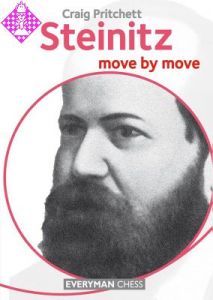 Steinitz: Move by Move22,50 €
Steinitz: Move by Move22,50 € -
 Play the Queen's Gambit18,50 €
Play the Queen's Gambit18,50 € -
 Play the French 4th edition24,50 €
Play the French 4th edition24,50 € -
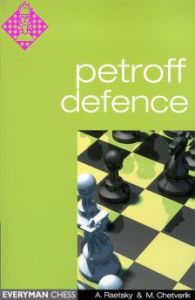 Petroff Defence18,50 €
Petroff Defence18,50 € -
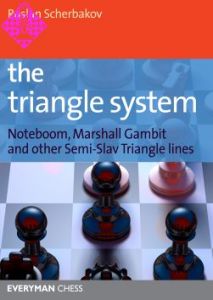 The Triangle System23,95 €
The Triangle System23,95 € -
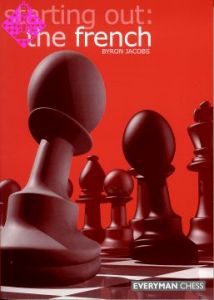 Starting Out:The French18,95 €
Starting Out:The French18,95 € - Mehr von Everyman


